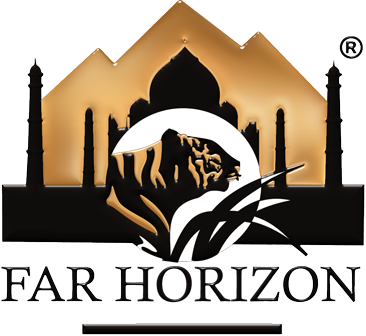The Himalayan Kingdoms
more_vert
-
Duration20 Days
-
Region
-
Category
-
Best Time
- February - April
- November
Introduction
Destinations Covered
Kathmandu
The City of PeaceKathmandu - city of peace, lives true to this description. The city is charming, busy, bustling, serene, alive and asleep - all at once. The capital of Nepal, Kathmandu is the most accessible city in the country - it is Nepal's only metropolitan city as well.
Chitwan
Where Tigers and Rhinos roamPokhara
A mirror to the HimalayasWith its stunning scenery, adventurous activities, a galore of food and many other attractions, this city of Pokhara will tick the right boxes on your Tour planning .Cradled at the foothills of the Himalayas, Pokhara is a metropolitan city in Nepal - it is even called the Tourist Capital of Nepal. This city offers a myriad of options for travelers of all kinds - from thrilling adventures and unforgettable journeys into the wild, to tranquil contemplation and serene meditation.
Thimphu
The Beating Heart of BhutanIt is a charming capital city that is nestled in the Himalayas with the magnificent sites of the Raidak River which passes through it which is often called as the Thimphu River.
Punakha
The Land of Red RicePunakha is one of the 20 districts located in Bhutan. This place was the previous capital of Bhutan up until 1955 after which the capital was changed to Thimpu. This place is in a close proximity to Thimpu and one can easily reach here by means of car. This place is usually warmer in winter and colder in summer. Located at the height of 1200 m this place is known for its extensive rice cultivation.
Paro
The Gateway to the Last Himalayan KingdomThis beautiful Paro valley is about 2250m above the sea level. Paro is believed to be one of the first valleys to have received the influences of the Buddhism. The wide and fertile Paro valley has both an ancient and a modern face.
Darjeeling
Queen of the HimalayasSpread over a steep mountain ridge, nestled amidst acres of lush green tea plantations, Darjeeling stands at the height of 2,050 meters above sea level, thus boasting of cool climes all year round. This scenic hill station is the perfect getaway for a romantic honeymoon and is just around 700 kilometres away from Kolkata.
Pelling
The breath-taking KhangchendzongaGangtok
The Gateway to SikkimNestled between the mighty peaks of the Himalayas, the city of Gangtok rises as a center for Tibetology and Tibetan Buddhist culture. It is the capital of the state of Sikkim in India and a popular destination for globetrotters. The beauty of the city can be imagined by the simple fact that it is filled with dense forest, pleasing climate and majestic locations, one can easily get lost in the serene beauty of North-eastern India. This corner is also one of the offbeat locations of India which is away from the hustle and bustle of metropolitan cities.
Kolkata
The City of JoyKolkata (formerly Calcutta) is the capital of West Bengal and the second largest city in India (after Mumbai). This city is a daily festival of human existence, simultaneously noble and squalid, cultured decidedly futuristic.
History and Culture
The history of Kolkata is intimately related with its invention during the British rule dating back 300 years ago. Earlier known as Calcutta, it originated as a capital of British India in 1960 when East India Company dominated the country.
Detailed Itinerary
- Day 1 Arrive Kathmandu
- Day 2 Kathmandu - Optional Mountain Flight (subject to weather conditions)
- Day 3 Fly, Kathmandu – Bharatpur (Chitwan) (U4 351 at 0945/1010 Hrs)
- Day 4 Chitwan National Park – Pokhara (160 kms/ 99 miles / approx. 5 hours’ drive)
- Day 5 Pokhara
- Day 6 Fly, Pokhara – Kathmandu (YT 674 at 0900/0930 hrs)
- Day 7 Fly Kathmandu – Thimphu (KB 401 at 0940/1105 Hrs Tentative time) | Drive to Thimphu (60 kms/ 37 miles / approx. 1.5 hours’ drive)
- Day 8 Thimphu
- Day 9 Thimphu – Punakha (73 kms/ 45 miles / approx. 2.5 hours’ drive)
- Day 10 Punakha
- Day 11 Punakha - Paro (approx. 3.5 hour drive)
- Day 12 Paro
- Day 13 Fly Paro – Bagdogra (KB 130 at 1150/1205 Tentative time) | Drive to Darjeeling (93 kms/ 58 miles / approx. 3.5 hours’ drive)
- Day 14 Darjeeling
- Day 15 Darjeeling – Pelling (75 kms/ 47 miles / approx. 4 hours’ drive)
- Day 16 Pelling - Gangtok (127 kms/ 79miles / approx. 6 hours’ drive)
- Day 17 Gangtok
- Day 18 Gangtok – Bagdogra (125 kms/ 78 miles / approx. 5 hours’ drive) and fly to Kolkata 6E 6444 at 1420/1520
- Day 19 Kolkata
- Day 20 Kolkata – Departure (Room booked till 12:00 Noon)







































